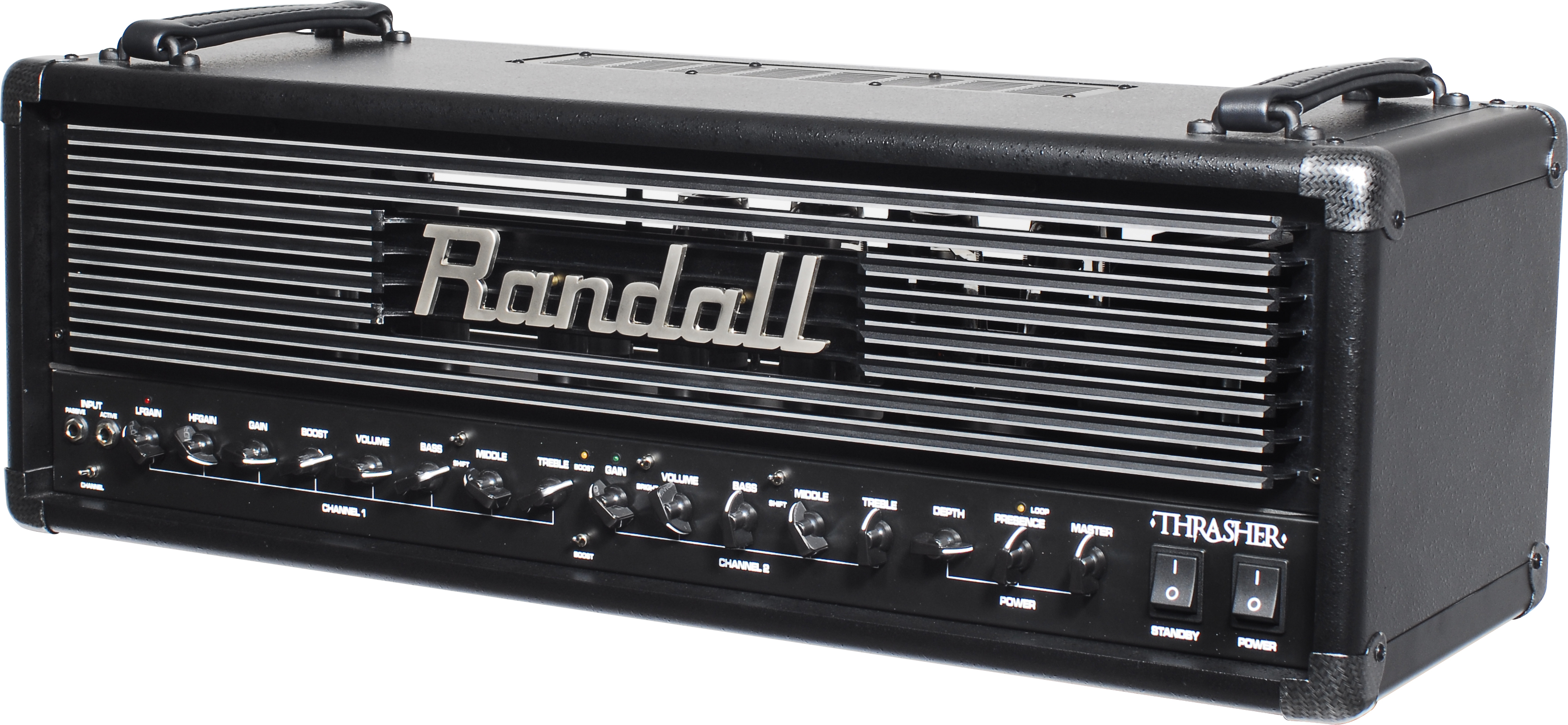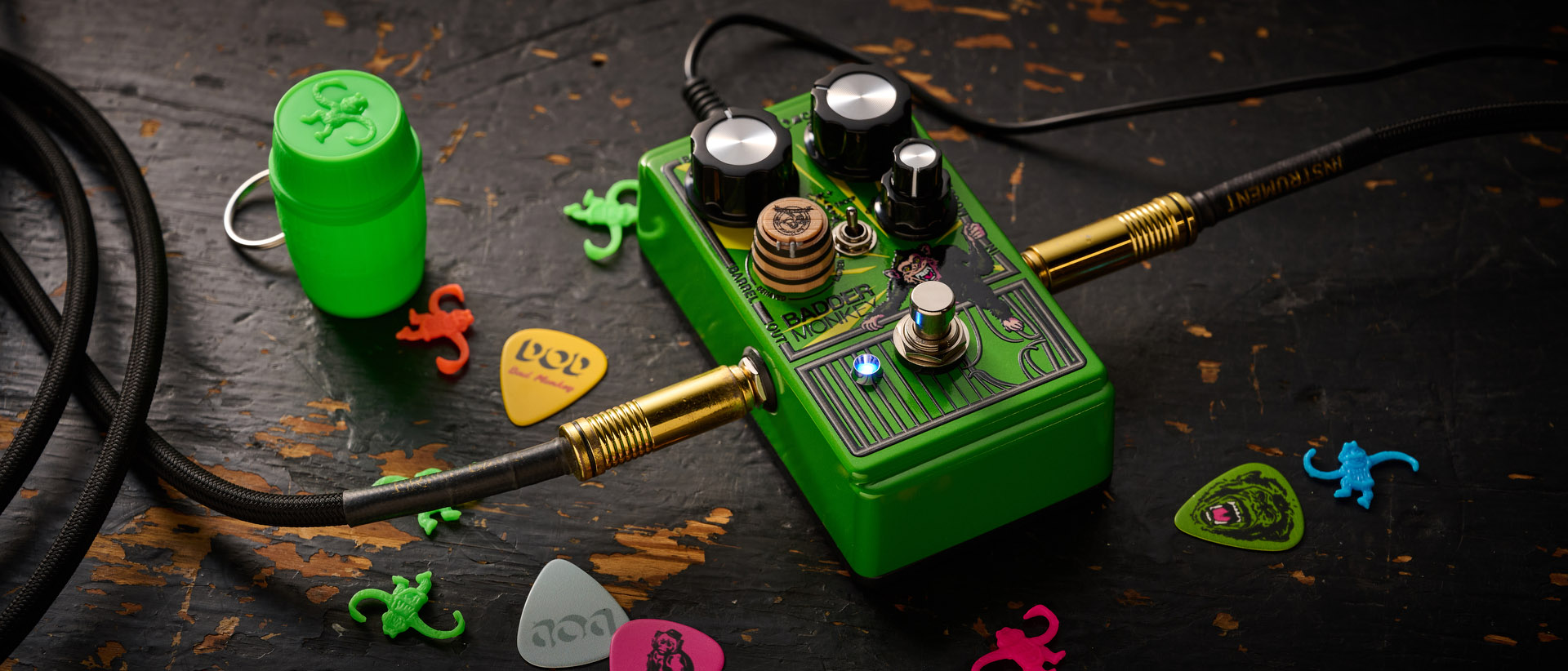Review: Tweak and Destroy — Randall Thrasher Head

For the last 25 years or so, Randall amplifiers have played an influential role in shaping the sound of modern metal.
Dimebag Darrell’s preference for Randall amps like the RG-100 and his signature Warhead model completely changed metal guitarists’ minds about the virtues of solid-state amps.
Back in 2005, Randall raised approving eyebrows with their revolutionary MTS Series tube amps, featuring modular preamps designed by Bruce Egnater, which were endorsed by Kirk Hammett, Scott Ian and George Lynch. That led to the development of Randall Signature Series amps for Hammett, Ian and Lynch.
In April 2012, Randall announced a new partnership with design engineer Mike Fortin of Fortin Amplification, known for his acclaimed high-gain tube amp designs. As a result, Randall has introduced two entirely new amp lines designed by Fortin—the Thrasher Series and RD Diavlo Series—that usher in a new era of all-tube amps designed for the modern metal connoisseur.
With the exception of their current signature models (which include amps designed for Nuno Bettencourt, Ola Englund, Hammet, Ian and Lynch), the Thrasher head is the current reigning flagship overlord of Randall’s current amp offerings, providing a bone-crushing 120 watts of output and some of the biggest, baddest sounds ever to emanate from four glowing tubes.
FEATURES
The Randall Thrasher head is big beast of an amp, harnessing the power of four 6L6 power amp tubes and six 12AX7 preamp tubes to provide 120 watts of output with incredibly saturated gain. It features two fully independent channels (clean and gain), each with its own volume, gain, bass, middle and treble controls, and three-position shift switch to change each channels voicing.
All the latest guitar news, interviews, lessons, reviews, deals and more, direct to your inbox!
Both channels share a boost switch; when engaged, it boosts Channel 2 by a preset amount, but Channel 1 has a boost knob that lets the user control the amount of gain. Channel 1 (the gain channel) additionally has separate high-frequency and low-frequency gain controls, and Channel 2 (clean) includes a bright switch.
The master section has master volume, depth and presence controls. Separate 1/4-inch input jacks are provided for guitars with passive or active pickups, and a channel-selection switch is located beneath the inputs in case you want to select channels without a foot controller.
The Thrasher’s rear panel is loaded with professional features that recording engineers and guitar techs dream of alike. In addition to a wide array of speaker output jacks, the rear panel features XLR emulated and 1/4-inch raw line outputs with a ground-lift switch, and an effect loop with series and parallel return jacks and adjustable send level. There are also voltmeter test points and bias controls, and two 1/4-inch footswitch jacks for engaging the effect loop and selecting channels and the boost functions using the included two-button footswitch controller.
PERFORMANCE
When it comes to modern high-gain metal tones, the Thrasher is simply mind blowing. The preamp’s multiple gain stages produce layer upon layer of harmonically rich textures that sound like several guitars playing at once. Channel 1’s separate low- and high-frequency gain controls provide incredible tone sculpting power.
By boosting the high-frequency gain and turning down the low-frequency gain, upper strings benefit from greater sustain and compression while the bottom end retains crunch, definition and fast attack. These controls are particularly useful for guitarists playing seven- or eight-string or baritone guitars. Even with the gain boosted to the max, the amp produces virtually imperceptible white noise, making a noise gate unnecessary unless you need an on/off clamp for palm muting or other rhythmic effects.
The clean channel is equally impressive in its own right, producing crystalline highs, robust mids and tight percussive bass. The clean channel’s headroom is impressive, but if you want overdrive crunch, it’s available by engaging the boost switch. I’m not a fan of reverb on high-powered amp heads, so I’m glad it’s absent here, but the clean tones sound phenomenal with a digital reverb unit patched into the effect loop.
While the Thrasher ships with 6L6 tubes, it can accommodate EL34 or 6550/KT88 tubes as well. I installed a quartet of 6550s into it, made the appropriate bias adjustments, and was blown away at the massive, chunky and tight tones that emanated forth. If you prefer smoother and more compressed tones, EL34 tubes are the way to go, but no matter what type of tube you choose, the Randall Thrasher delivers the goods when you want the power and the glory of today’s most aggressive high-gain tones.
CHEAT SHEET
LIST PRICE $2,699.99
MANUFACTURER Randall/U.S. Music Corp., randallamplifiers.com
A two-channel 120-watt amp head featuring separate gain and clean channels, each with its own boost switch.
The gain channel features high-frequency and low-frequency gain controls that allow guitarists to sculpt incredibly complex tones.
Voltmeter test points and bias controls make it easy to swap tube types or ensure optimum performance at gigs and on the road.
Three-position shift controls for each channel change the voicing of the tone stacks, giving users even greater control over the amp’s tonal character and response.
THE BOTTOM LINE
Connoisseurs of high-gain tones will immediately want to experience the powerful capabilities of the Randall Thrasher, which is likely to go down in history as a legendary amp in metal guitar circles.
Chris is the co-author of Eruption - Conversations with Eddie Van Halen. He is a 40-year music industry veteran who started at Boardwalk Entertainment (Joan Jett, Night Ranger) and Roland US before becoming a guitar journalist in 1991. He has interviewed more than 600 artists, written more than 1,400 product reviews and contributed to Jeff Beck’s Beck 01: Hot Rods and Rock & Roll and Eric Clapton’s Six String Stories.

